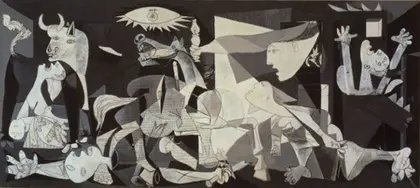The world will mark 50 years since the death of Pablo Picasso on April 8, but the world knows little about the artistic giant’s Ukrainian connections - some personal and some creative.
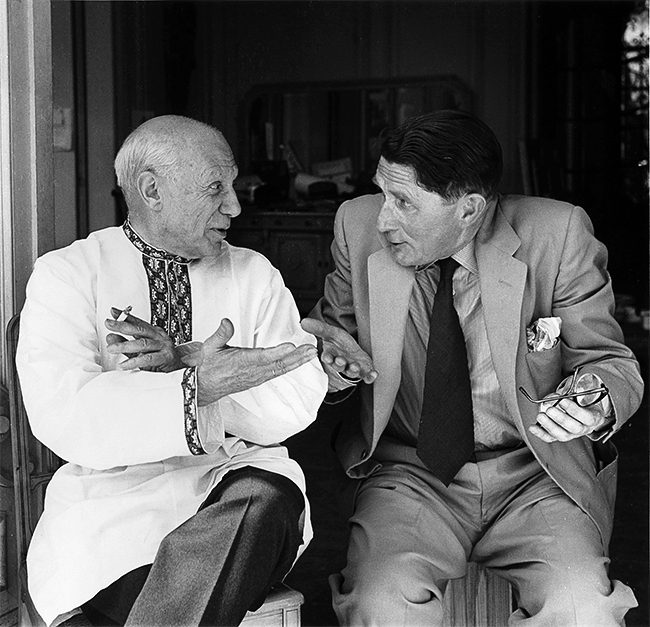
JOIN US ON TELEGRAM
Follow our coverage of the war on the @Kyivpost_official.
Pablo Picasso with biographer
So, who was Olha Khokhlova who is sometimes referred to as Picasso’s ‘mysterious wife’? Kyiv Post’s Editor-in-Chief, Bohdan Nahaylo, wrote about Khokhlova and her relationship with Picasso in a piece for Panorama magazine:
“A young woman born in Nizhyn to an army officer’s family was embarking on her fascinating if ultimately tragic life. This was Olha Khokhlova, a graceful ballerina from a respectable conservative family who the brilliant rascal of an artist Pablo Picasso fell in love with, married, fathered a son with, painted again and again, and eventually left for a younger woman.
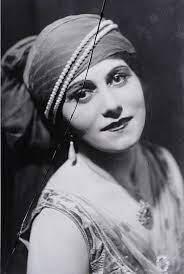
Olha Khokhlova
“The already famous Spanish artist fell for the Ukrainian dancer while she was performing with Sergei Diaghilev’s Ballets Russes in Paris. He wooed her and when she agreed to marry him in 1918 — her father and brothers had perished during the revolutionary turmoil in the Russian Empire and there was no way back home — she became his main model and muse throughout his classical period.
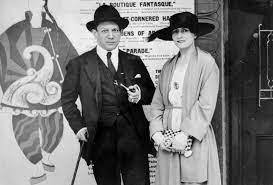
Pablo Picasso and Olha Khokhlova
“As their marriage collapsed, Picasso increasingly depicted Olha as a snobbish and neurotic depressive, and after they separated in 1935, she was left alone with their son and faded into obscurity. Picasso refused to divorce her for financial reasons and she died in Cannes in 1955, a dancer paralyzed by a stroke, her life broken by the man she had not only inspired but also introduced, as her grand-daughter wrote ‘to the world of aristocratic taste and savoir-vivre.’
“Olha was gradually removed from his biography, but an exhibition devoted to her held during the summer of 2017 at the Picasso Museum in Paris did much to highlight the significance of this ‘mysterious woman’. One wonders if Picasso thought of Olha and Ukraine when he posed in a Ukrainian embroidered shirt with his biographer Roland Penrose,” Nahaylo concludes.
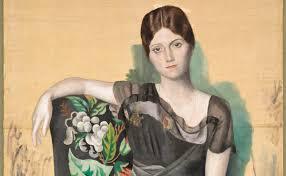
Pablo Picasso’s painting of Olga Khokhlova
In terms of a creative connection, Pablo Picasso was strongly aware of and admired the work of Ukrainian naïve artist Maria Prymachenko, a self-taught folk-art painter from a small town in Kyiv region. At an exhibition of Prymachenko’s work at the 1937 World’s Fair in Paris, Picasso was recorded as saying: "I bow down before the artistic miracle of this brilliant Ukrainian."
The Prymachenko / Picasso connection has become more poignant during the period of Russia’s invasion of Ukraine. On the second day of the full-scale war, Feb. 26, Russian forces bombed the village of Ivankiv in the Kyiv region, where a small museum hosted Prymachenko works. The museum, which is not close to any strategic or military objects, was hit.
It is reported that, as the building burned to the ground, Prymachenko’s pieces were saved by a museum watchman and a local resident,. Prymachenko’s great-granddaughter, who runs the artist’s foundation, has stated that all of Prymachenko’s works held in the museum were saved. The foundation hasn’t revealed where the paintings are currently being stored, but the painting “Scarecrow” was recently displayed at the Venice Biennale. Local authorities have said that a philanthropist has come forward to restore the destroyed museum.
Like the Prymachenko museum, it is estimated by UNESCO that some 250 objects of Ukrainian culture were destroyed during the Russian invasion, including 21 museums. This is in addition to other defining and devastating imagery from the war, such as the complete annihilation of vast parts of Mariupol, Kharkiv and other cities that have become ‘urban wastelands’.
It is little wonder that on the 50th anniversary of Picasso’s death, Ukrainian and global observers of the devastation are reminded of one of hiss greatest pieces, and his prescient warning about the horror of war: ‘Guernica’.
A treatment of ‘Guernica’ by Sasha Matveeva
Finally, well-hidden pieces of Picasso’s legacy exist in rural Ukraine. In a small town called Parkhomivka in the Slobozhanyshchyna region of north-eastern Ukraine, there is a small museum that houses a Picasso drawing, painting and two ceramic works.
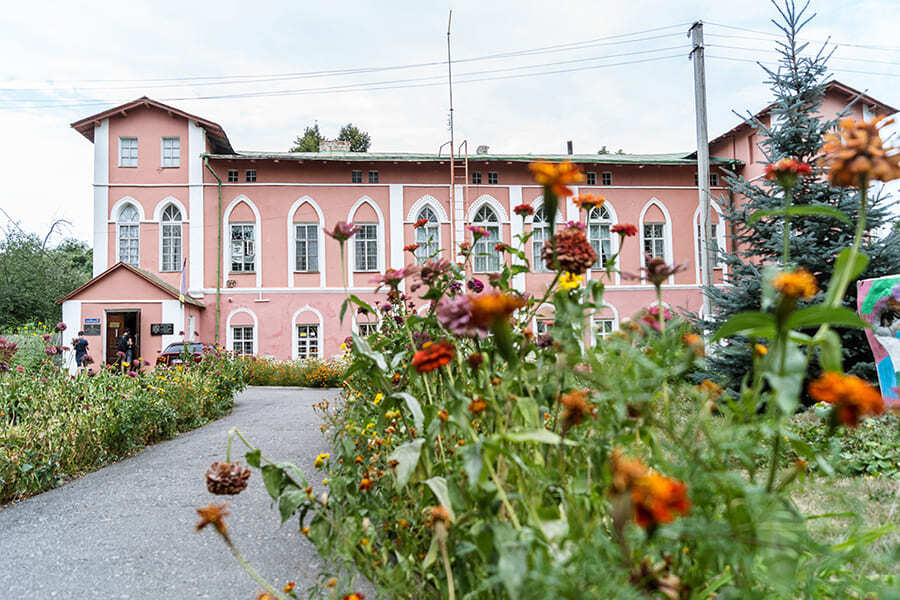
Art Museum in Parkhomivka
In 1945, under Soviet rule, the museum was quite remarkably established as a student project by Afanasii Lunov, a local school teacher. From humble beginnings of collecting local coins, religious icons and traditional embroidery, Lunov and generations of students slowly built it up through his extraordinary efforts and his voluminous correspondence with potential donors.
In that respect, Pablo Picasso’s works ‘Portrait of Frederic Joliot-Curie’ and ‘The Dove and the Olive Branch’ as well as the ceramics — ‘Owl’ vase and ‘Divers’ decorative plate — were presented to the museum by Soviet-era poet Ilya Ehrenburg who was a friend of Picasso. The artist created the poet’s likeness for her tombstone.
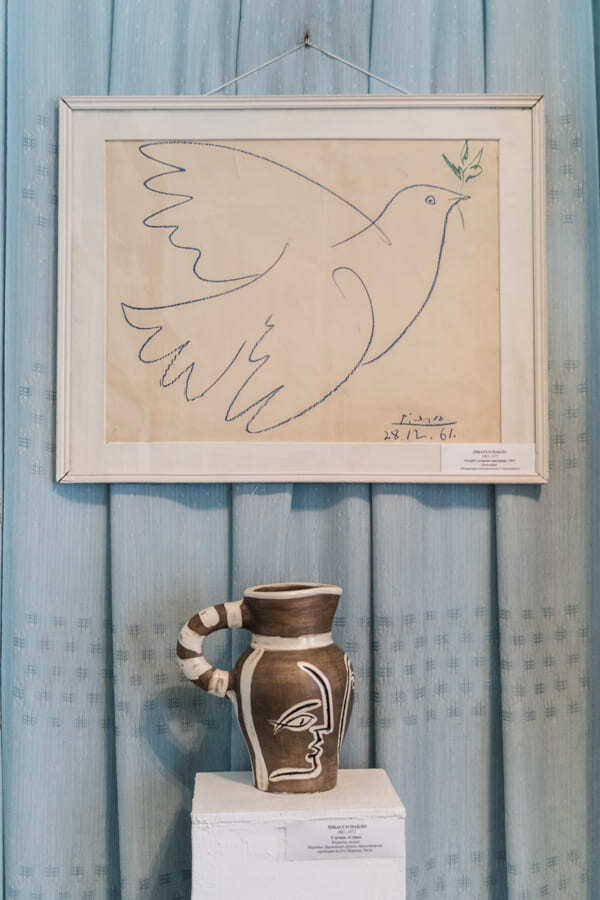
Picasso works in Parkhomivka museum
The museum has, among its 7500 pieces, works by Wassily Kandinsky and Kazimir Malevich, but is currently temporarily closed because of the war. While its host village did not come under occupation during the full-scale invasion, it’s valuable collection – together with four ‘Ukrainian Picassos’ - was moved to a secret and secure location. Fifty years after his death, those now-hidden pieces are perhaps Picasso’s last remaining connection to Ukraine.
You can also highlight the text and press Ctrl + Enter


